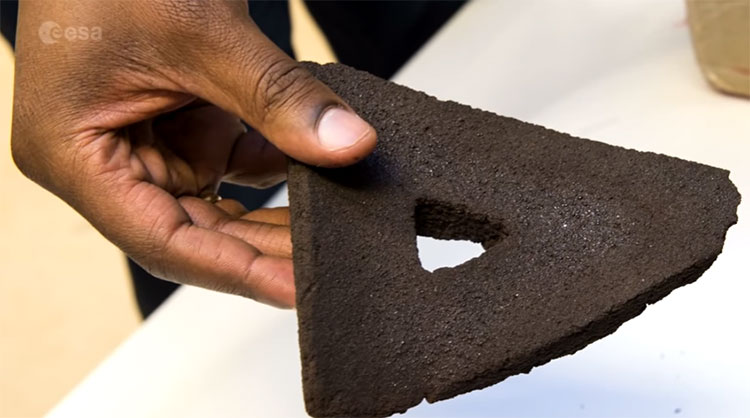Brick production from Moon dust builds extraterrestrial settlements
Moon dust can be used to brick the future astronauts on the Moon in the future.
The European Space Agency (ESA) revealed the latest type of moon tile may soon be used to build a base on the Moon, Long Room reported. This tile is the starting point for building a permanent base on the Sun, ending the dependence of adventurers on supplies from Earth.
"Moon bricks will be made out of dust," said Aidan Cowley, ESA's scientific adviser. "You can create hard bricks from dust to build roads and launchers, or settlements that help protect astronauts from the harsh environment of the moon."

This powder-like fine dust is everywhere, promising to be an ideal material for brick production.
The surface of the Moon is covered with fine gray dust. This powder-like fine dust is everywhere, promising to be an ideal material for brick production. ESA has conducted many rolling, firing and brick-making experiments. They conclude that the bricks are very similar to bricks used on Earth. Moon land is a basalt material made of silicate, a characteristic common in volcanic bodies.
"The Moon and Earth share a geological history, and it is not difficult to find materials similar to those found on the Moon, in traces of lava flow," Aidan explained.
About 45 million years ago, eruptions occurred around Cologne, Germany. The team from the nearby European Astronaut Center (EAC) found volcanic powder in the area very similar to the composition of the moon dust. This European moon dust replacement material is named EAC-1. The Spaceship EAC project is studying the EAC-1 to prepare technology and design for future moon exploration."One of the great points of moon land is 40% oxygen , " Aidan said.
The EAC project studied how to collect oxygen in the soil and use this oxygen source to help astronauts extend the life on the Moon. Frequently exposed to radiation, moon dust is charged. This can cause particles to separate from the surface. Erin Tranfield, a member of ESA's moon dust research team, stressed that we still need to understand the electrostatic nature of moon dust. Scientists still do not know about the chemical charge of dust also affects construction.
- The first successful printing of brick can build a house on the Moon
- Street artist with brick dust pollution in Beijing
- No ice on the Moon crater!
- Hanoi produces bricks and tiles according to advanced technology
- Secrets of strange land on the Moon
- Humans will 'move' to space in 2100
- Super dust storms show signs of life on Saturn moon
- Moon dust can interfere with the discovery process
- Moon dust is full of radioactivity
- Using Moon dust as input material for 3D printing
- The moon is the first new place for extraterrestrial humans?
- Brick from soil simulating Martian soil: stronger than concrete
 Van Allen's belt and evidence that the Apollo 11 mission to the Moon was myth
Van Allen's belt and evidence that the Apollo 11 mission to the Moon was myth The levels of civilization in the universe (Kardashev scale)
The levels of civilization in the universe (Kardashev scale) Today Mars, the sun and the Earth are aligned
Today Mars, the sun and the Earth are aligned The Amazon owner announced a secret plan to build a space base for thousands of people
The Amazon owner announced a secret plan to build a space base for thousands of people